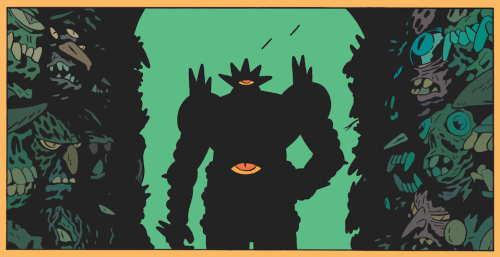“The object of war is not to die for your country but to make the other bastard die for his."When the crazy-quilt patchwork of nations that was Ealderde erupted in the Great War, a number of new technologies were brought to bear. Thaumaturgical and alchemical weapons and "weaponizable" advances were among these, and were utilized on a scale never seen before--with long-lasting, and terrible consequences.
- Gen. George S. Patton
First among these was the use of alchemical weapons, particularly gas. The forces of Neustria were the first to utilize them with fragmentation shells filled with stinking cloud potions. The Staarkish army soon escalated to lethal chemicals. Their "Magic Corps Men" cast cloudkill which, as a heavier than air gas, was ideal for filling enemy trenches. Since mages are a quirky lot, generally ill-suited to military discipline, their numbers in the Staarkish forces were small, and it proved expedient to replace them with thaumaturgic shells which could be fired from artillery at a greater distance. The gas could also be pumped out of tubes, if the wind directions were right. Soon these methods were adopted by all the larger nations.
Other, more exotic chemicals were tried. Acid fog was released from sprayers to discourage attackers or soften defenders. Yellow musk, the pollen of the eponymous creeper, cultivated in secure greenhouses, was used to entrance enemies and make them easy targets. Amorphing solutions delivered via artillery shells sowed terror by making flesh malleable, dissolving limbs or even melting soldier's together. The only limits were the imaginations (and funding) of the alchemists and thaumaturgic engineers.
Magical weapons of mass destruction were also employed, and could be delivered to distant targets through the use of artillery and airships. Thaumaturgical explosives and blights laid waste to cities and farmlands. Rays of searing light, or jets of intense cold fired from zeppelins cut swaths of destruction across enemy trenches. Implosive weapons literally collapsed fortifications--or hapless troops--in on themselves.
Then there were the weapons calculated to cause as much terror as direct damage. Teleportation beams were turned upon population centers. Fear rays lead to mass panic. The battlefield fallen were briefly animated to turn on their grieving comrades. This is to say nothing of the even more exotic reality-warping weapons which, though rare, were powerful enough to disrupt the elemental fields to this day.
Another technological change in the Great War was touted as potentially rendering the human soldier obselete. Constructs and automata have been used before, but never in such a scale. "Land ironclads" or "landships"--now colloquially called "tanks"--were an innovation by the army of Grand Ludd on thaumaturgical techniques used to make anthropomorphic golems. Some tanks required human operators, but others were automonous to a degree, like the golems. This proved to be another one of the mistakes of war, as man-hunting kill-machines still roam the blasted former battlefields and depopulated wastes of Ealderde.
Man-shaped golems were still used--largely for their flexibility and, in some cases, greater psychological effect on the enemy--but these were produced with greater mechanical skill, giving them a wider variety of uses. Once again terror was a prime goal, as squads of murderous constructs with the appearance of children's toys were sent into unsuspecting villages in the dead of night.
It's the hope of many that the most lasting innovation of the conflict will be that man has finally had enough of war. Certainly, the devastation wrought in Ealderde, and the refugees that still pour into the New World to escape the post-war horror, ought to be powerful reinforcers for such a lesson. Still, as the cynics among us would point out, no one has ever lost money betting on the short-memory or long-term foolishness of mankind.





















